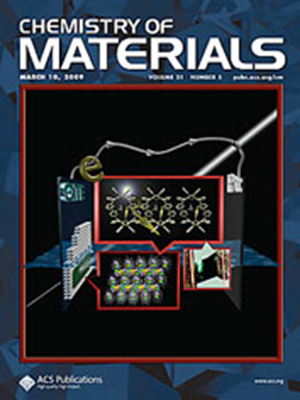Integrating Large Language Models into the Chemistry and Materials Science Laboratory Curricula
IF 7.2
2区 材料科学
Q2 CHEMISTRY, PHYSICAL
引用次数: 0
Abstract
How might LLMs impact student learning in laboratory settings, especially regarding critical thinking, core concepts, and scientific identity? What are the ramifications of LLMs for course delivery strategies, including course design, scaffolding, and assessment? Can LLMs facilitate the incorporation of alternative delivery strategies into the undergraduate curriculum, such as course-based undergraduate research experiences (CUREs), to potentially broaden access to authentic research? Figure 1. Demonstration of data visualization and analysis generated entirely by natural language prompting using ChatGPT-4o. The first example highlights data analysis from a general chemistry absorption spectroscopy laboratory, in which students are asked to (a) generate a calibration curve and (b) determine the concentration of an unknown analyte using Beer’s law. The second example illustrates a chemical kinetics experiment familiar to upper division physical chemistry laboratories. Students (c) collect and visualize time-dependent absorbance data, relate the measured absorbance to analyte concentration with Beer’s law, and then (d) linearize the data to determine the reaction order, rate constant, and integrated rate law. The authors gratefully acknowledge support from the National Science Foundation under Grant No. DMR-2333654. The authors thank the invited workshop speakers: Allyson Fry-Petit, Bo Wu, Taylor Sparks, Boris Kiefer, Susan Gentry, Sam Cox, Mayk Caldas Ramos, and Shruti Badhwar. The authors also gratefully acknowledge all workshop participants for their attendance. This article references 31 other publications. This article has not yet been cited by other publications.

求助全文
约1分钟内获得全文
求助全文
来源期刊

Chemistry of Materials
工程技术-材料科学:综合
CiteScore
14.10
自引率
5.80%
发文量
929
审稿时长
1.5 months
期刊介绍:
The journal Chemistry of Materials focuses on publishing original research at the intersection of materials science and chemistry. The studies published in the journal involve chemistry as a prominent component and explore topics such as the design, synthesis, characterization, processing, understanding, and application of functional or potentially functional materials. The journal covers various areas of interest, including inorganic and organic solid-state chemistry, nanomaterials, biomaterials, thin films and polymers, and composite/hybrid materials. The journal particularly seeks papers that highlight the creation or development of innovative materials with novel optical, electrical, magnetic, catalytic, or mechanical properties. It is essential that manuscripts on these topics have a primary focus on the chemistry of materials and represent a significant advancement compared to prior research. Before external reviews are sought, submitted manuscripts undergo a review process by a minimum of two editors to ensure their appropriateness for the journal and the presence of sufficient evidence of a significant advance that will be of broad interest to the materials chemistry community.
 求助内容:
求助内容: 应助结果提醒方式:
应助结果提醒方式:


